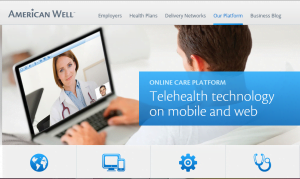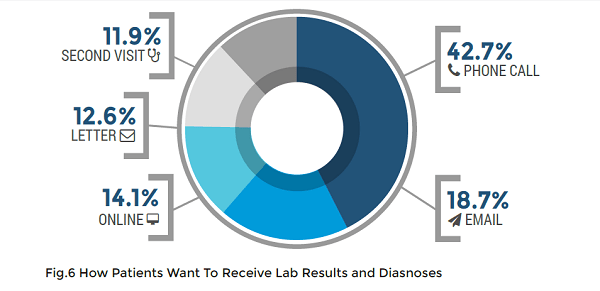An American study conducted by Technology Advice focused on the relationship between American patients and their doctors, especially through Internet and the “Patient Portals”.
Patient Portals are internet portals which allow patients to communicate; to be safely monitored by their doctors; to receive analysis results; to take appointments, etc…
How do patients want to communicate with their doctor?
 These last few years, the American health system has made changes: actors of the system have taken a greater interest in digital solutions and connected health.
These last few years, the American health system has made changes: actors of the system have taken a greater interest in digital solutions and connected health.
This is partly due to Blue Button, an application that allows all Americans to access and download all of the data of their medical file. They can safely and almost instantly share it with health professionals. In emergency cases, Blue Button allows emergency physicians to quickly access the patient’s health data on their smartphone: do they have a chronic disease, allergies, what is their medical treatment…
Health professionals are encouraged to communicate with their patients thanks to internet portals dedicated to patients. In the United States, this is one of the biggest emerging technologies in the health sector.
Thanks to portals, doctors can interact with patients at a distance; they can send analysis results and take appointments easily through an online interface. These portals have become very successful in the United States despite the fact that doctors have had mixed feelings when they presented the solution to patients. According to Technology Advice, it is “almost certain” that they will “become mainstream”.
The main results of the study are as follows:
- Almost 40% of patients do not know that their treating doctor uses a portal system for patients. Less than half of patients (49,2%) say they’ve been presented with Patient Portal outside of a medical examination.
- More than half of patients say their doctor doesn’t monitor them following a consultation.
- Among doctors who say they monitor patients following a consultation, only 9.1% of them did through a patient portal.
- Overall, patients say they prefer to take appointments and be monitored by phone. However, patients aged from 18 to 24 years old like using the portal and the online calendar better.
- 42.7% of patients prefer to receive the results of their tests by phone. Only 18.1% prefer to receive them by mail, and 14.1% prefer online messages.
In conclusion, the study shows that patients are not all aware of the existence of patient portals and that they tend to prefer communicating with their doctor by phone. The youngest are more likely to use an Internet portal to take appointments and be monitored by their treating doctor.
The eldest patients prefer using the phone, however the study notes that these trends are not set in stone: many doctors still refrain from presenting portals to their patients. The results suggest that many doctors do not possess adequate means to initiate patients to using these online resources.
> Download the study: How Patients Want to Communicate with Their Physician
Published by the Editorial Staff on


